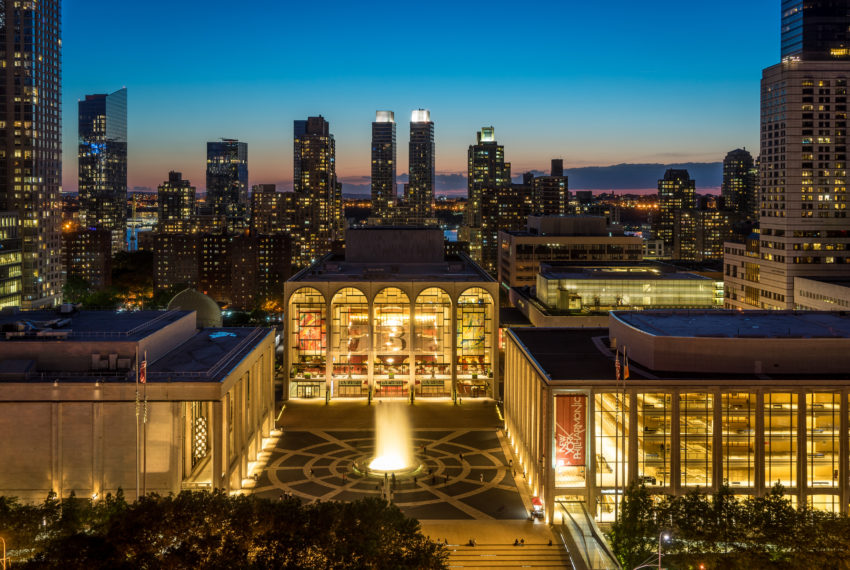
Lincoln Towers was developed during the early 1960s as a part of the urban revitalization efforts that began during the 1940s in New York City. The complex of six 28- and 29-story buildings sits in an area that was previously known as San Juan Hill. At the time, the area contained many tenement buildings for low-income housing. Today, the buildings of Lincoln Towers operate as cooperatives in a highly desirable location. Located in the middle of Lincoln Square, Lincoln Towers offers great access to the Lincoln Center and other must-see attractions in the Upper West Side of Manhattan.
Development of the Lincoln Square Area
After the Great Depression, New York City engaged in efforts to breathe new life into the city’s neighborhoods. Many areas, including San Juan Hill, had been marked by poverty and suffered from the after-effects of the economic conditions of the Depression. During the 1930s, Franklin Roosevelt’s New Deal brought funding for revitalization efforts and public works projects. Robert Moses, a renowned builder and city planner, began working in earnest on urban revitalization projects. Some of his work included the construction of the West Side Highway and large pools across the city. At the end of the 1950s, the Metropolitan Opera, Fordham University, and the New York Philharmonic looked for new locations and contacted Moses. He identified the San Juan Hill neighborhood as an ideal location to build the Lincoln Center, which would serve as the city’s new cultural center.
After the creation of plans for the Lincoln Center and surrounding buildings, area tenants relocated. The empty tenement buildings of San Juan Hill were subsequently used as a backdrop in the 1961 film “West Side Story.” The empty buildings in the movie give people a picture of what the area looked like before the development of Lincoln Square.
The six buildings that make up the Lincoln Towers were built as rent-controlled apartments with more than 3,800 units. John D. Rockefeller III helped to lead the Lincoln Center and the surrounding buildings. His work helped to turn the neighborhood into a cultural hub in Manhattan.
Transformation into Cooperatives
During the 1980s, the owners of the Lincoln Towers decided to transform them from apartments into cooperatives. After a complete refurbishment of the buildings in 1987, the existing tenants could choose to buy their apartments or continue to rent them. If they chose to buy them, they were charged far less than the market value under an agreement. The New York Times reported that residents could buy their apartments for $30,500 per room. By contrast, outsiders who wanted to buy apartments in the buildings paid $68,000 per room.
Some of the residents bought their apartments so that they could turn around and sell them for a comfortable profit margin of 120% or more. At the time, the conversion from apartments to cooperatives was one of the largest and costliest in the city. All areas of the buildings were refurbished, including the apartments for people who chose to remain as tenants instead of owners. This helped to achieve uniformity in the living conditions in the buildings.
Lincoln Towers as a Luxury Community
Since the late 1980s, the buildings of the Lincoln Towers have continued to undergo renovations to keep them modern and up-to-date. The 20-acre complex includes towers, parks, and playgrounds. Everything has been maintained in excellent condition. People who live in Lincoln Towers enjoy the ability to walk to the Lincoln Center, Central Park, and Riverside Park. They enjoy the vibrancy of the neighborhood. Living in the Lincoln Center allows residents to enjoy all that living in the city has to offer. They can also avoid long commutes from the suburbs to get to work.
Community and Neighborhood
Lincoln Towers is a safe community with acres of gated parks. Lincoln Square is bordered by and easy access to Central Park and Riverside Park. The buildings are secure with 24-hour doormen and security personnel. The community is family-friendly and offers a respite for people from the hustle and bustle of city life. Residents also enjoy easy access to some of the city’s most renowned attractions. Besides the Lincoln Center, Lincoln Square contains some of the top restaurants in New York. Lincoln Towers residents are within walking distance of The American Museum of Natural History, Central Park, Riverside Park, the Broadway Theater district, and much more. The area also contains some of the best hospitals and schools in the city, and Lincoln Square is known for its prestige and amenities.
Transportation Access and Parking
The location of Lincoln Towers in the center of Lincoln Square also offers residents easy access to transportation. A few blocks away from Lincoln Towers, there are express and local stations where people can take the 1 or 2/3 trains. Residents can also take advantage of the seven bus lines that have stops in front of the buildings. These bus lines run crosstown, north, and south so that people can get to wherever they want to go in the city.
Some of the buildings that make up Lincoln Towers have garage parking. While some of the buildings do not have garages available, all of the buildings have outdoor parking spaces available to the residents. Residents can purchase outdoor parking spaces or choose to rent monthly parking spaces if they wish to do so.
The history of Lincoln Towers is rich, as well as, being located in one of the most culturally vibrant areas of Manhattan and New York City. From its inception during the early 1960s to the modern luxury cooperative community it has developed into today, countless people have proudly called Lincoln Towers their home. The spacious floor plans and amenities of Lincoln Towers continue to draw residents who want to have everything that the city has to offer at their doorsteps. People who live in Lincoln Towers enjoy everything that the buildings have to offer along with great access to some of the city’s most desirable attractions.
